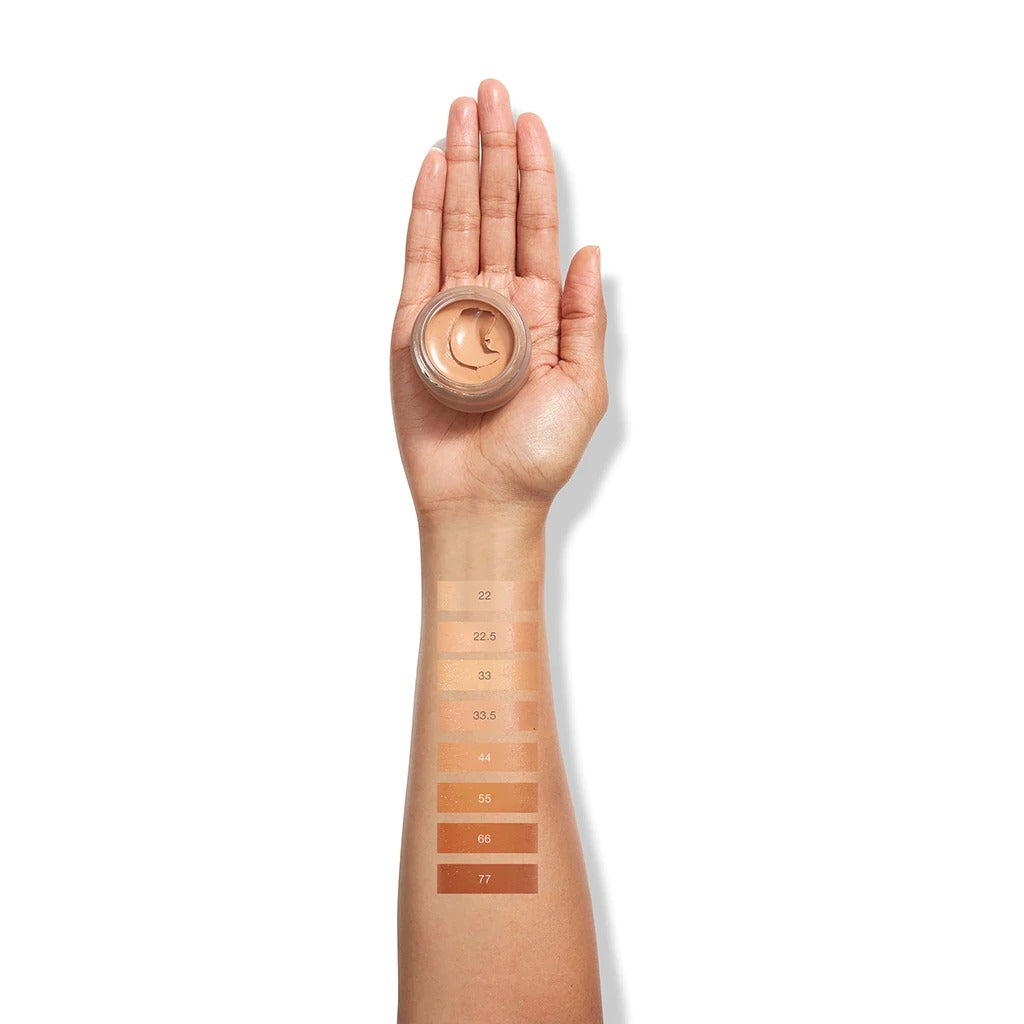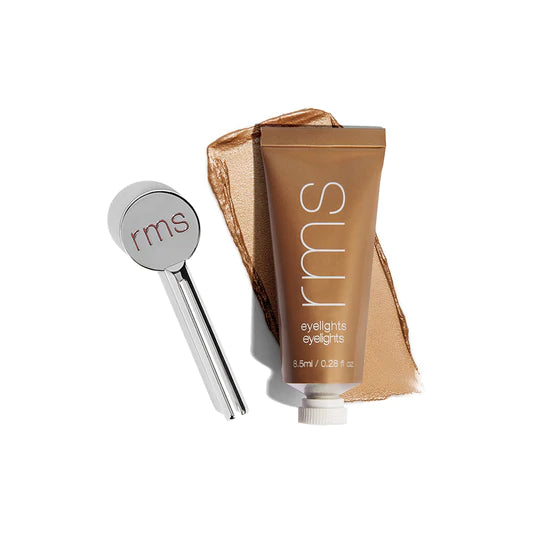Neutral Skin Tone Dos & Don'ts

Discovering you have a neutral skin tone can be exciting. No other skin tone has quite the amount of leverage in terms of color choices. Along with this freedom, however, usually comes a little anxiety over which colors to choose, and how to find the perfect foundation shade.
The experts at RMS Beauty love all skin tones, and know that neutral skin-toned beauties have specific needs. Additionally, people with neutral skin tones can learn to avoid certain beauty no-no’s that can leave their skin looking dull or drab.
In this tutorial, we’ll guide you through determining whether or not you have neutral skin and how to find the perfect products to make your skin truly come alive with radiance.
What’s My Skin Tone?
Skin tone often gets confused with skin undertone and skin overtone. Your skin tone is a compilation of both of these elements.
Usually referred to as the color of your skin when you look at it in normal daylight, your skin tone is the true color of your skin with no sun exposure or irritation. Skin tone is based on multiple factors, like ethnicity, the amount of melanin naturally occurring in your skin, and even the hemoglobin in your blood.
As you age, your skin tone changes because your skin naturally thins, allowing the veins underneath to become more visible. This affects your undertone, which will naturally affect your true skin tone.
According to color experts, there are 110 different skin tone shades that have been identified and labeled worldwide.
Skin Tone Is Different From Undertone
Skin undertone is the color of the deep layers of your skin, or the tint of color given off by your veins just below the surface of your skin.
Undertones are usually referred to as cool, neutral, or warm. This helps you get a better idea of how undertones describe the temperature of your skin. Sometimes you will hear undertones referred to as seasons; for instance, cool undertones are sometimes referred to as winter and warm undertones are referred to as summer.
Finding your undertone can be a challenge, but there are three easy ways to figure it out.
- Look at the inside of your wrist. The skin in this area is thin and allows you to see your undertone better than other areas of your skin. If you see bluish-pink or purple hues, you are likely a cool undertone. Peach or golden undertones typically mean you have warm undertones. If you have difficulty distinguishing an actual undertone, or if you feel your undertone is a bit yellow, you are likely a neutral.
- Determine what kind of jewelry looks best against your skin. If you live for a beautiful silver pendant, you’re probably a cool undertone. If gold is your go-to, your undertone is likely warm. If you feel good in both, you’re likely a neutral.
- Think about how your skin reacts to sun exposure. If you rarely tan and burn easily, you’re probably a cool undertone. Warm undertones tan and rarely burn. Neutral undertones find themselves somewhere in the middle, being both able to tan with limited sun exposure, but burn with overexposure.
Keep in mind that while many neutral skin tones will also have a complimentary neutral undertone, you can also have a neutral skin tone that has a cool or warm undertone.
Skin Tone Is Different From Overtone
The overtone of your skin refers to the most superficial layer of your skin. This is the layer of skin that tans or burns and develops rashes or blemishes. Many factors can affect your skin’s overtone, which is generally anywhere from virtually translucent to deep mahogany in color.
Your skin overtone changes from season to season, or if you have irritation from a product that causes redness or a rash. Your overtone is similar to the tone of your skin, but because tone is the total balance of your overtone and your undertone it’s important to note the difference.
Key Traits of Neutral Skin Tones
I can’t figure out my undertone/skin tone/overtone is a common complaint we hear from neutral skin-toned people. If you feel like you can’t determine whether you’re cool or warm, you’re likely a neutral.
Neutral undertones are possible, but most people will lean slightly more warm or cool. For instance, if you have a slight olive or golden undertone in your skin, you’re a warm neutral. If your undertone is more peach or flesh colored-you’re closer to a cool undertone.
Neutral overtones are typically peach, brown, amber, golden, or olive. However, it’s important to remember that overtones can change.
Neutral skin tones fall somewhere in the middle of the skin tone shade charts. It’s rare for extremely fair-skinned or dark-skinned individuals to be true neutrals. Usually, your skin tone is closer to beige, buff, or “medium.”
Once you’ve honed in on your skin tone, you can start creating beautiful looks with a variety of color families. Here’s how to do it like a professional.
Neutral Skin Tone Dos
As a neutral, you can use virtually any color palette you want. Your hair color and eye color are obvious considerations, but truly no color is off-limits. Below are three ways to play up your neutral skin and keep it looking vibrant.
1. DO Select Foundation Using Your Undertone
Do shop for foundation based on your skin undertone. Your overtone can change (if you tan or if you have irritation.
Foundation can color-correct those issues if you use one that matches your undertone. If you have a truly neutral underdone, select a foundation that doesn’t have an obvious pink or golden hue. You’ll be looking for a true, flesh tone color.
One to try: RMS Beauty “Un” Cover-Up Cream Foundation in 11.5. This foundation is a neutral buff beige with true neutral undertones that works perfectly for true neutral skinned beauties.
2. DO Create Living Skin
Neutral skin can sometimes appear dull or lackluster. Combat this effect by using a product that creates radiance. A pearlescent mixing balm can be added to virtually any product (from foundation to lip color) to add brilliance and glow without looking glittery.
One to try: RMS Beauty Master Mixer. This coconut oil-based product works perfectly alone or in combination with your other foundations, concealers, powders, and virtually any cosmetic you put on your skin. Mix it with your foundation to create living skin that looks luminescent, hydrated, and dewey.
3. DO Experiment With Color
It’s easy to get stuck in a rut of neutral shades when you have a neutral skin tone. Taupe and cream shadows may be your staple, but don’t be afraid to think outside the neutral color palette. Neutral skin plays well with virtually any color, and can create eyes that pop or lips that are perfectly noticeable.
Consider plums, violets, reds, and pinks-all colors you can wear as a neutral skin tone.
Product to try: RMS Beauty Eyelights Cream Shadow in Spark. This is a gorgeous sun-ripened plum with just a hint of violet that is still neutral enough to work perfectly with neutral skin tones but with added color to bring out any eye color and give them a pop of color.
The Takeaway: Use color cosmetics to keep your skin living, radiant, and full of healthy color. Neutral skin tones never have to feel drab or dull; the right colors can highlight the perfect neutrality of your skin.
Neutral Skin Tone Don’ts
As with any skin tone, there are a few pitfalls you can learn to avoid.
1. DON’T Overdo Foundation
It’s tempting to over-correct your skin tone, especially if you have skin that is blemish-prone or just uneven. Instead of using full coverage, which can look cakey and unnatural, try using a sheer, buildable foundation only in areas that really need correction.
Less is more when trying to create true, living skin. Using a luminizer is a great way to highlight your skin, without adding coverage.
2. DON’T Use Heavy Bronzing Powder
As summer approaches, most of us long for golden-tanned skin. We know the dangers of sun exposure, so we use bronzing powders instead. Overdoing it with a heavy bronzing powder can make your neutral skin tone look orange.
Instead, opt for a cream-based bronzer that offers a more translucent sweep of color.
One to try: RMS Beauty Buriti Bronzer. Made with buriti oil, this translucent bronzer looks effortlessly natural on any skin tone, giving you a hint of golden shimmer and zero orange tint.
3. DON’T Get Bored
Having a neutral skin tone is no reason to resign yourself to neutral colors. Flirt with flamingo pink or wear a daring red lip. If you do decide to stay with neutrals, try copper or honey as a change from standard beige and brown. Your skin undertone is your guide for finding the perfect shadows and lip colors.
Product to try: RMS Beauty Wild With Desire RMS Red. This classic orange-red looks great on neutral skin tones and draws attention to flawless skin. Pair it with RMS Beauty “Un” Cover-Up foundation and concealer to complete the look.
Wake Up Neutral Skin!
Neutral skin tones have it made, with the ability to wear virtually any color they’d like. Avoid masking your skin with heavy foundation and liven up dull skin with luminizing products and colors that highlight your healthy skin.
Sources:
Skintone Guide Revealing The New Pantone Skintone Guide|Pantone.com
The science behind skin color, Part One|Columbia Tribune
Human skin pigmentation as an adaptation to UV radiation|PNAS.org




